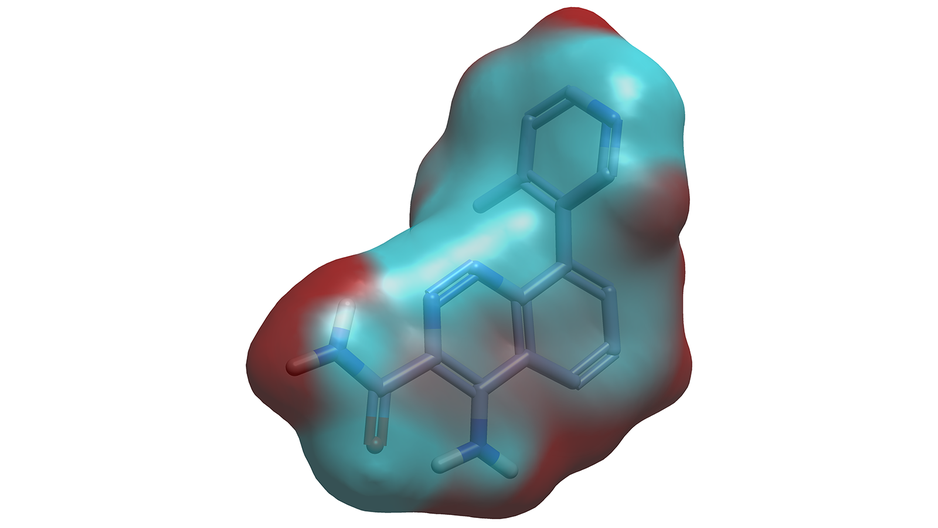flare™
Flare Quantum Mechanics
State-of-the-art Quantum Mechanics (QM) calculations for your ligands
Based on the popular Psi4 and GFN2-xTB implementations, Quantum Mechanics in Flare offers accurate ab-initio DFT-level calculations as well as a computationally efficient semi-empirical tight-binding approach. The QM module features robust pre-defined settings novel users can trust, as well as a choice of different levels of theory for more experienced users.
- Run QM experiments to optimize the input geometry and calculate the QM energy and properties of ligands, conformations and poses
- Optimize the computational efficiency of your workflow by running fast semi-empirical optimizations of large ligands and peptides, followed by single-point energy refinement at DFT-level
- Use QM to calculate and display the electron density, molecular electrostatic potential, and HOMO/LUMO orbitals for your ligands
- Calculate and visualize the QM torsion profile for selected rotamers in ligands of interest using a friendly wizard-driven workflow
- Optimize calculation time by using the Cresset Engine Broker™ to connect to a local cluster or cloud computing facilities

QM provides an accurate description of a ligand’s electronic structure, enabling molecular electrostatic potentials to be calculated at a high level of theory. Red = positive electrostatics; Blue = negative electrostatics.
References and acknowledgements
https://xtb-docs.readthedocs.io/en/latest/setup.html
D. G. A. Smith, L. A. Burns, A. C. Simmonett, R. M. Parrish, M. C. Schieber, R. Galvelis, P. Kraus, H. Kruse, R. Di Remigio, A. Alenaizan, A. M. James, S. Lehtola, J. P. Misiewicz, M. Scheurer, R. A. Shaw, J. B. Schriber, Y. Xie, Z. L. Glick, D. A. Sirianni, J. S. O’Brien, J. M. Waldrop, A. Kumar, E. G. Hohenstein, B. P. Pritchard, B. R. Brooks, H. F. Schaefer III, A. Yu. Sokolov, K. Patkowski, A. E. DePrince III, U. Bozkaya, R. A. King, F. A. Evangelista, J. M. Turney, T. D. Crawford, C. D. Sherrill, Psi4 1.4: Open-Source Software for High-Throughput Quantum Chemistry J. Chem. Phys., 2020, 152, 184108
C. Bannwarth, S. Ehlert, S. Grimme, GFN2-xTB—An accurate and broadly parametrized self-consistent tight-binding quantum chemical method with multipole electrostatics and density-dependent dispersion contributions, J. Chem. Theory Comp. 2019, 15, 3, 1652-1671